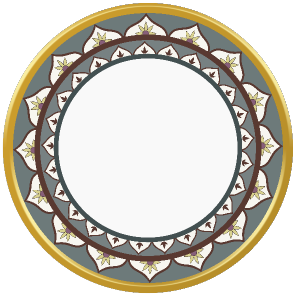

0


0

FASHION
By Rashmi Rao
1 August, 2019
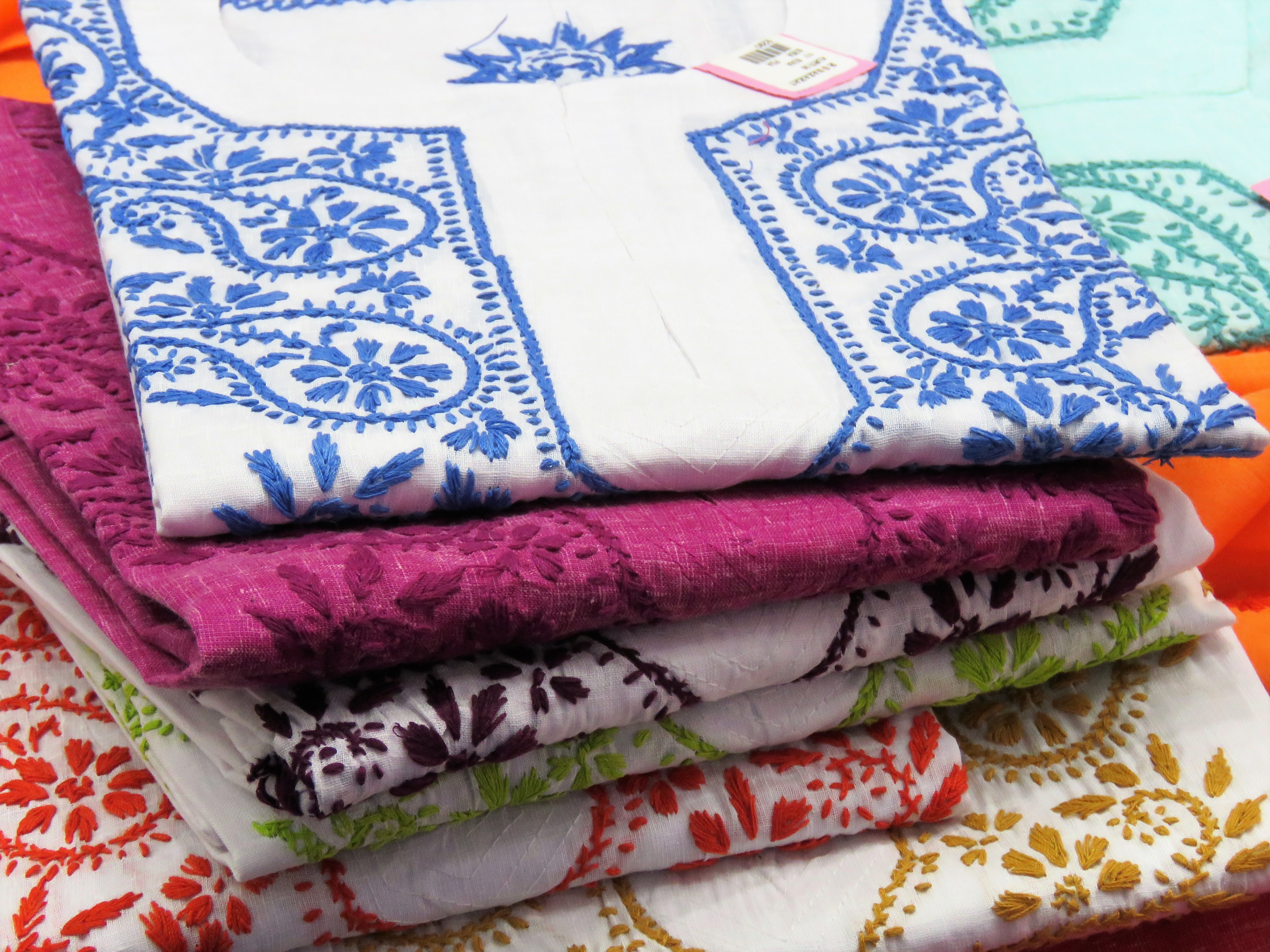
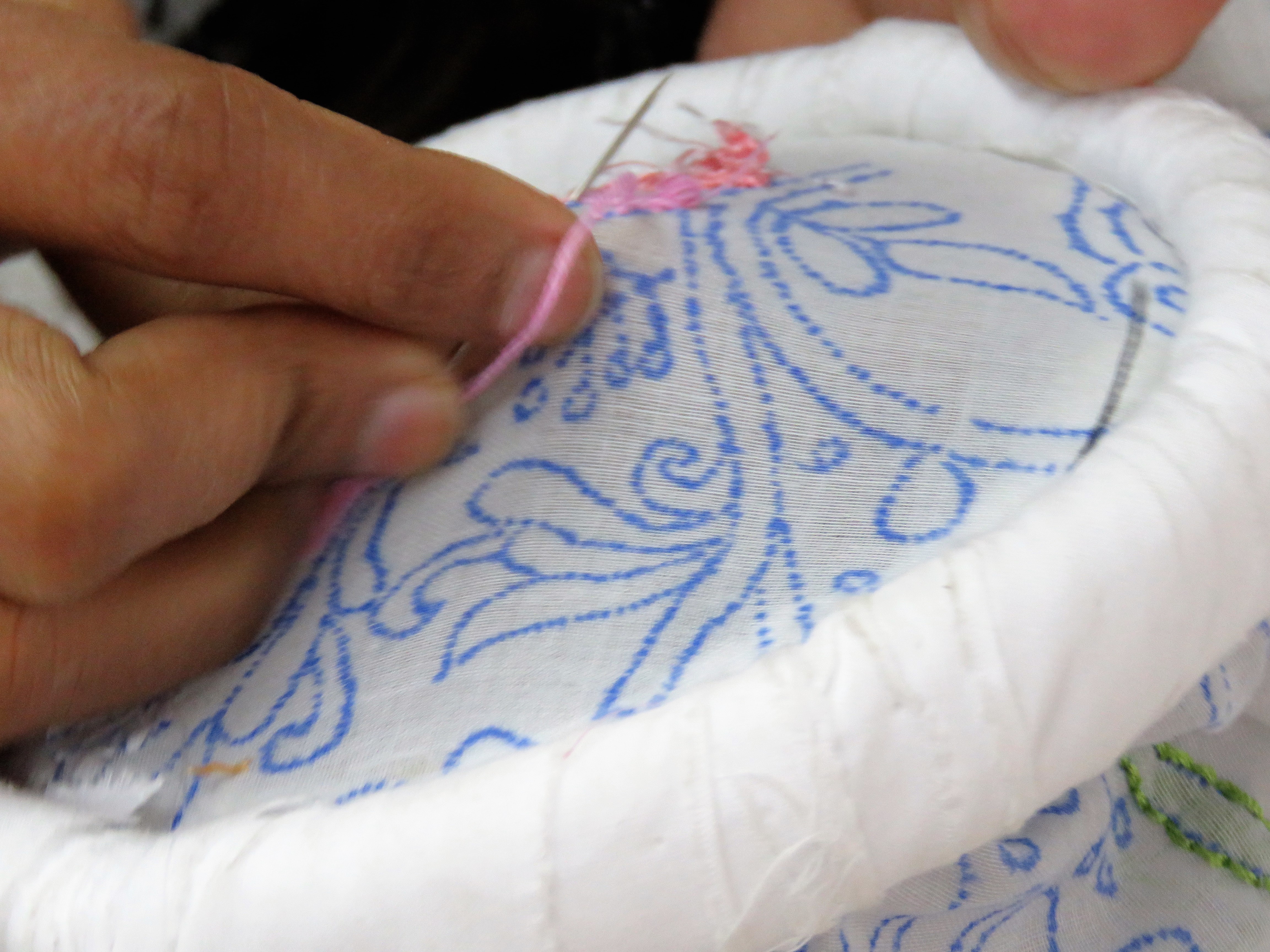 Artisan at work
Origins
The theories associated with the origin of this craft are varied. While some believe that this art existed since the times of Chandragupta Maurya others believe that it is originally from Persia. The latter theory propounds that it was patronized and made popular by the Mughals and then by the nawabs of Lucknow. Irrespective of the theories of its origin, this exclusive art that started as a kind of “white on white” embroidery is going strong centuries later given its beauty and demand.
Typical patterns and process
Given the strong Persian influence, flowers are the most popular motifs in Chikankari designs. Paisley patterns and detailing including leaves, stems, and vines are some of the most common inspirations for Lucknow chikan designs. While muslin and mulmul were the most popular fabrics on which Chikan work was done during the 18th century, a wide array of underlying fabrics including cotton, voile, Kota, organza, silk, chiffon and georgette are used today. They are bought in bulk from various sources like cloth mills from Surat, Mumbai, Ahmedabad, and parts of Gujarat.
Once the basic cloth is washed and dyed, the design is printed using wooden blocks. Most of the blocks are printed using the indigo dye and once the design is embossed, it is sent for embroidery. This is the most difficult and time-consuming part of the process and most of the work is sent in bulk to the nearby villages. It is usually the womenfolk who do this work during the little free time they have after completing their household chores. Once done, the fabric is washed and ready for packaging.
Artisan at work
Origins
The theories associated with the origin of this craft are varied. While some believe that this art existed since the times of Chandragupta Maurya others believe that it is originally from Persia. The latter theory propounds that it was patronized and made popular by the Mughals and then by the nawabs of Lucknow. Irrespective of the theories of its origin, this exclusive art that started as a kind of “white on white” embroidery is going strong centuries later given its beauty and demand.
Typical patterns and process
Given the strong Persian influence, flowers are the most popular motifs in Chikankari designs. Paisley patterns and detailing including leaves, stems, and vines are some of the most common inspirations for Lucknow chikan designs. While muslin and mulmul were the most popular fabrics on which Chikan work was done during the 18th century, a wide array of underlying fabrics including cotton, voile, Kota, organza, silk, chiffon and georgette are used today. They are bought in bulk from various sources like cloth mills from Surat, Mumbai, Ahmedabad, and parts of Gujarat.
Once the basic cloth is washed and dyed, the design is printed using wooden blocks. Most of the blocks are printed using the indigo dye and once the design is embossed, it is sent for embroidery. This is the most difficult and time-consuming part of the process and most of the work is sent in bulk to the nearby villages. It is usually the womenfolk who do this work during the little free time they have after completing their household chores. Once done, the fabric is washed and ready for packaging.
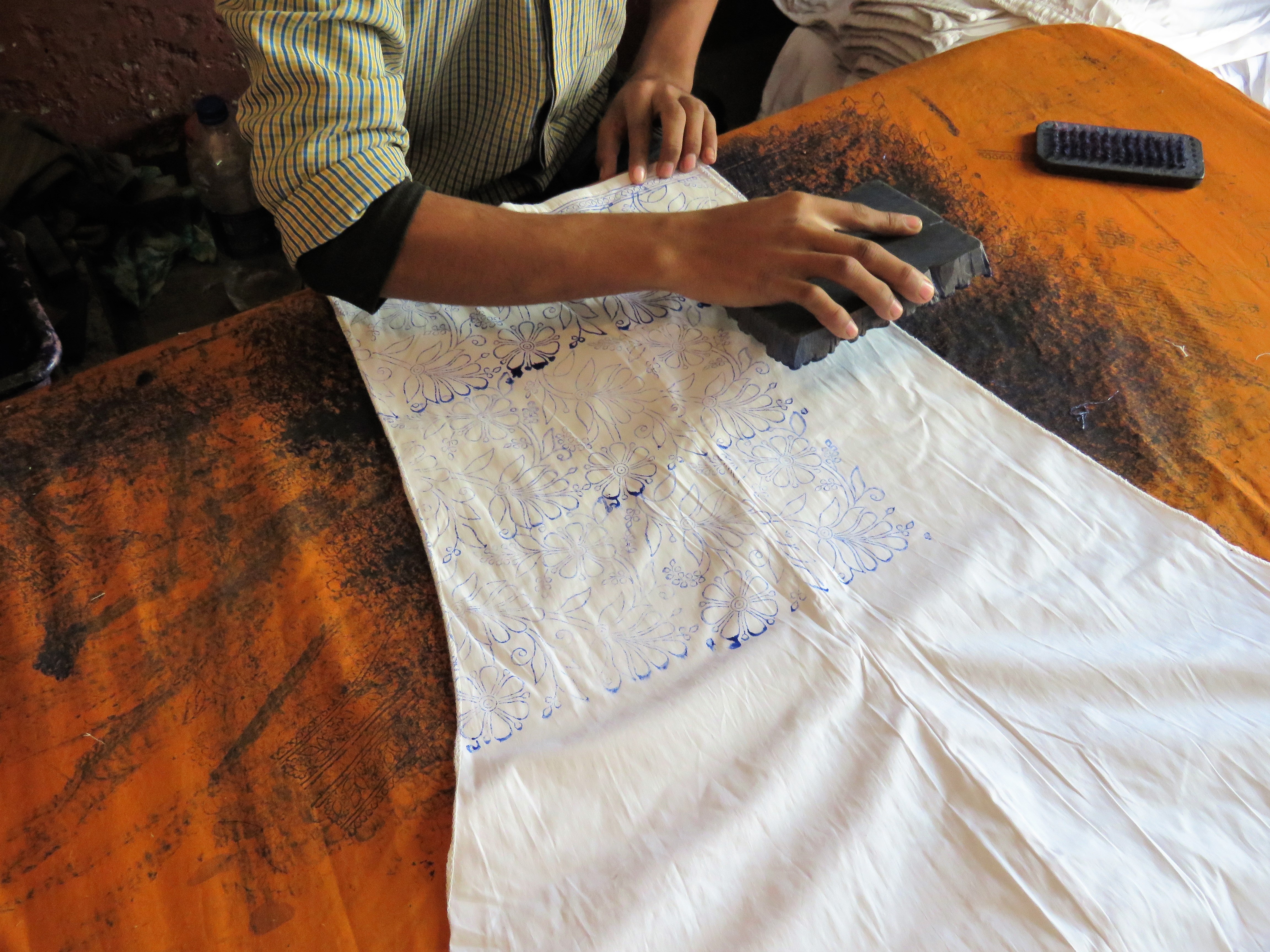 Block printing
Ornate and elaborate craft
One of the most complex forms of embroidery, Lucknow chikan has a whopping 36 different types of stitches! The final look depends on the kind of stitch, the thickness of the thread and the material of the underlying fabric. Threads from well-known companies like Anchor are used for the purpose of embroidery. ‘Bakhiya’, also known as shadow work is one of the popular stitches which involves doing the embroidery on the reverse so that only its ‘shadow’ appears on the correct side of the fabric. ‘Ulti bakhiya’, ‘Keel kangan’, ‘Zanzeera’, ‘Ghas ki patti’ and ‘Darzdari’ are some of the other commonly used stitching techniques. ‘Murri’, which is the oldest kind of stitch is one of the most complex and is mainly used in filling up the centre of ‘flower motifs’.
Block printing
Ornate and elaborate craft
One of the most complex forms of embroidery, Lucknow chikan has a whopping 36 different types of stitches! The final look depends on the kind of stitch, the thickness of the thread and the material of the underlying fabric. Threads from well-known companies like Anchor are used for the purpose of embroidery. ‘Bakhiya’, also known as shadow work is one of the popular stitches which involves doing the embroidery on the reverse so that only its ‘shadow’ appears on the correct side of the fabric. ‘Ulti bakhiya’, ‘Keel kangan’, ‘Zanzeera’, ‘Ghas ki patti’ and ‘Darzdari’ are some of the other commonly used stitching techniques. ‘Murri’, which is the oldest kind of stitch is one of the most complex and is mainly used in filling up the centre of ‘flower motifs’.
 Chikan kurtas
In keeping with the modern trends, the beauty of chikankari is enhanced using allied crafts like mirror work, other embellishments, and Mukesh work. The latter is also known as Mukeish is yet another complicated and dying craft that involves using thin metallic threads to form patterns to beautify the overall fabric. Confined to a small community who are skilled in this craft, threads of gold and silver were used during the yesteryears in Mukesh work.
All in all, Lucknow chikankari is a craft that is highly time-consuming and a complex one to master. The learning period can stretch up to as long as 20 years before one becomes an expert in the different stitching techniques.
Challenges
Like all native handicrafts, there are several challenges faced by Lucknow chikankari artisans. Most of them live in poverty and often work long hours to make ends meet implying that they have little or no bargaining power. They could certainly do with higher payouts for all their skill and talent. While things have improved after the registration of the “Self Employed Women's Association" aka SEWA in Lucknow, things could still be better. So, while their craft is the epitome of grace and dignity, the same is sadly not reflected in their own lives.
Chikan kurtas
In keeping with the modern trends, the beauty of chikankari is enhanced using allied crafts like mirror work, other embellishments, and Mukesh work. The latter is also known as Mukeish is yet another complicated and dying craft that involves using thin metallic threads to form patterns to beautify the overall fabric. Confined to a small community who are skilled in this craft, threads of gold and silver were used during the yesteryears in Mukesh work.
All in all, Lucknow chikankari is a craft that is highly time-consuming and a complex one to master. The learning period can stretch up to as long as 20 years before one becomes an expert in the different stitching techniques.
Challenges
Like all native handicrafts, there are several challenges faced by Lucknow chikankari artisans. Most of them live in poverty and often work long hours to make ends meet implying that they have little or no bargaining power. They could certainly do with higher payouts for all their skill and talent. While things have improved after the registration of the “Self Employed Women's Association" aka SEWA in Lucknow, things could still be better. So, while their craft is the epitome of grace and dignity, the same is sadly not reflected in their own lives.
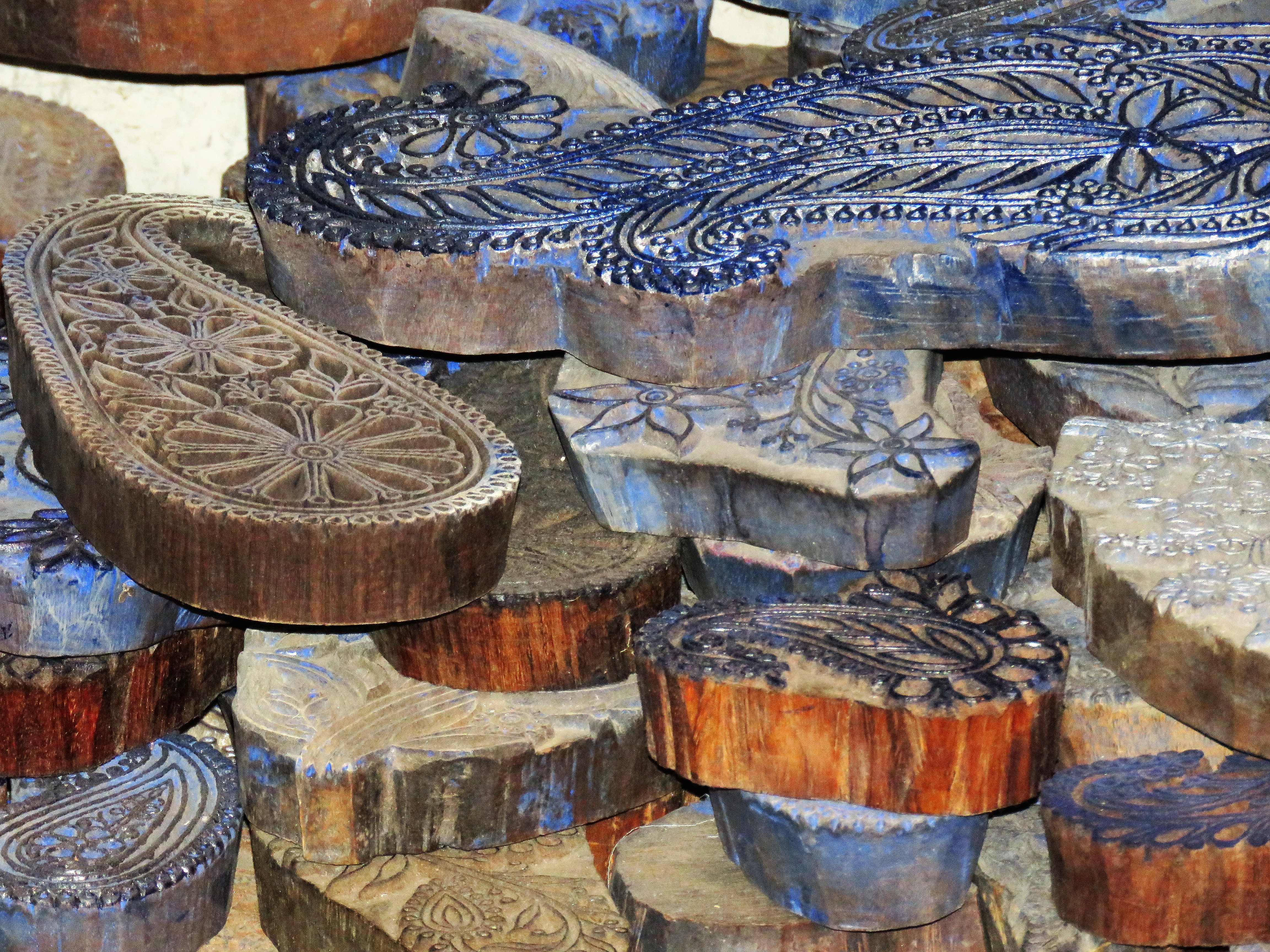 Wooden design blocks
Also, the industry is plagued with issues like imitation and machine embroidered fabric that is faster to produce and sold at a much cheaper rate. But per experts, a genuine Lucknow chikankari can always be differentiated not only in terms of its elegant look but also durability for they are far more durable than machine-made fabrics that tear easily.
To more about the iconic places in Bangalore, follow us on Facebook, Instagram, and Twitter. Download our magazine Spunky Indian for exclusive stories.
Wooden design blocks
Also, the industry is plagued with issues like imitation and machine embroidered fabric that is faster to produce and sold at a much cheaper rate. But per experts, a genuine Lucknow chikankari can always be differentiated not only in terms of its elegant look but also durability for they are far more durable than machine-made fabrics that tear easily.
To more about the iconic places in Bangalore, follow us on Facebook, Instagram, and Twitter. Download our magazine Spunky Indian for exclusive stories.